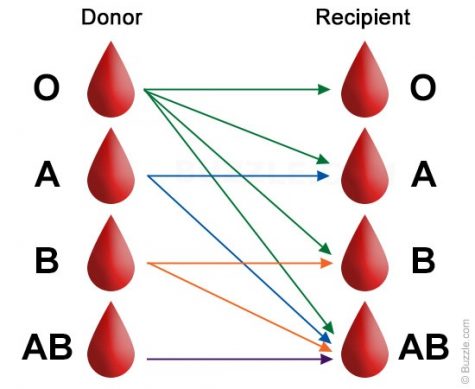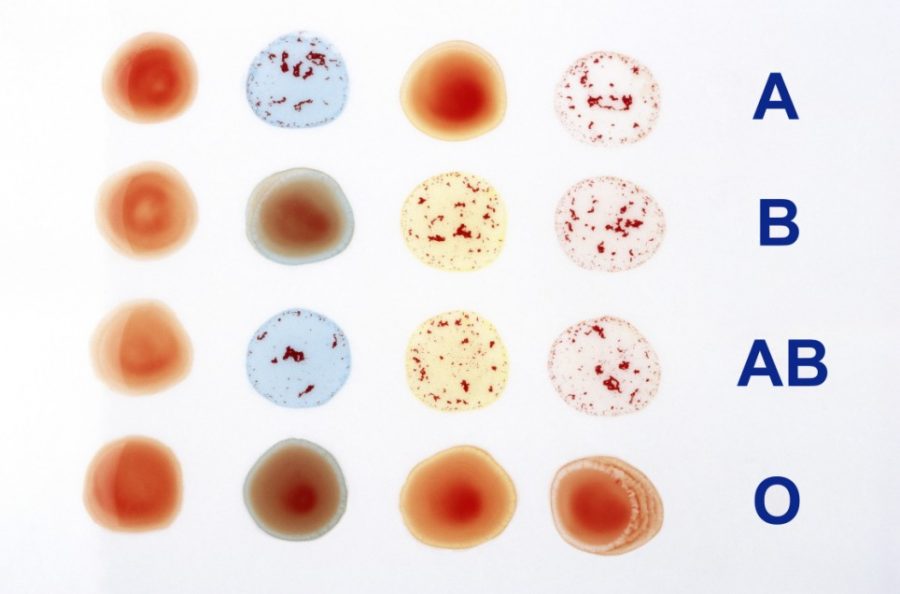American Red Cross introduces blood typing to Human Anatomy and Physiology students
Among several other Human Anatomy and Physiology (HAP) students on March 19th, junior Megan Johnson had blood pricked from her finger by a nurse from the American Red Cross. Megan’s blood was then used to chemically react with synthetic antibodies to determine her blood type. This hands-on activity was a first for both Megan and the HAP class itself, as it complements the class’s current study of anatomy and physiology of blood.
“I have always tried to get the American Red Cross to come to FHC,” HAP teacher Chad Scholten said. “They haven’t always been available in the past, so when I received a flyer indicating their offering of a blood typing program, I jumped at the opportunity. When we talk about [blood in class], what better way to make it more applicable and relatable to students than to know your own blood type?”
Megan agrees with Scholten, as this program has helped her understand blood’s physiology and how it’s unique to each individual.
“I always understand lessons better when I can see [them] applied to real life,” Megan said. “This helped a lot [with my studying]. When the nurse typed my blood, I actually got to see what I learned in class.”
Blood membranes are on blood cells, which are protein markers or antigens. Blood also produces antibodies, and they will go after, attack, or clump up to any foreign substances. It could be a virus, bacteria, or another cell. When a person is given blood, the body has to register it as either a friend or foe, if it is something that can exist through our arteries and veins, or if it is something that clumps up, attacks, and if it will stop further proceeding into the body.
“When you’re having your blood typed, you’re doing an artificial, synthetic way to make your blood clump up to see what antibodies are in your blood,” Scholten said. “They put drops in the blood to see which makes your blood clump up, or gluconate. If they up clump-up, the blood is positive for its corresponding antibody and/or antigen.”
Scholten said that it was good for students to hear and learn about blood typing from someone other than himself, as students “get sick of hearing it over and over again.” Hearing the information and lesson from two different sources, especially a nurse, allows students to hear a different version with a different twist to it.
Megan believes the blood typing program was both useful academically and in real-life situations, as she discovered she’s an A- blood type.
“I’ve always been curious about my blood type, but I’ve never had the opportunity to find out what mine is, so I think it’s really neat that Mr. Scholten brought this program to FHC,” she said.

Both Scholten and Megan believe that there is a significance to one knowing one’s blood type, especially if one was to undergo surgery or be in a medical emergency or an accident. In addition, both hope that the blood typing program will encourage the act of donating blood to save up three lives per donation.
Those from Red Cross handed out cards, indicating a chart of which donors can give to which recipients, emphasizing the amount of lives people’s blood type can save.
“I would hope this program has encouraged students to donate their blood, even if it has only encouraged one person, and it will be interesting to see during FHC’s next blood drive if more HAP students will participate,” Scholten said. “The nurses said they need a lot more blood in the tanks.”

Abby will be entering her second year on staff as a Senior, and will be leading The Central Trend staff as one of the two Editors in Chief. In the near...

























































































